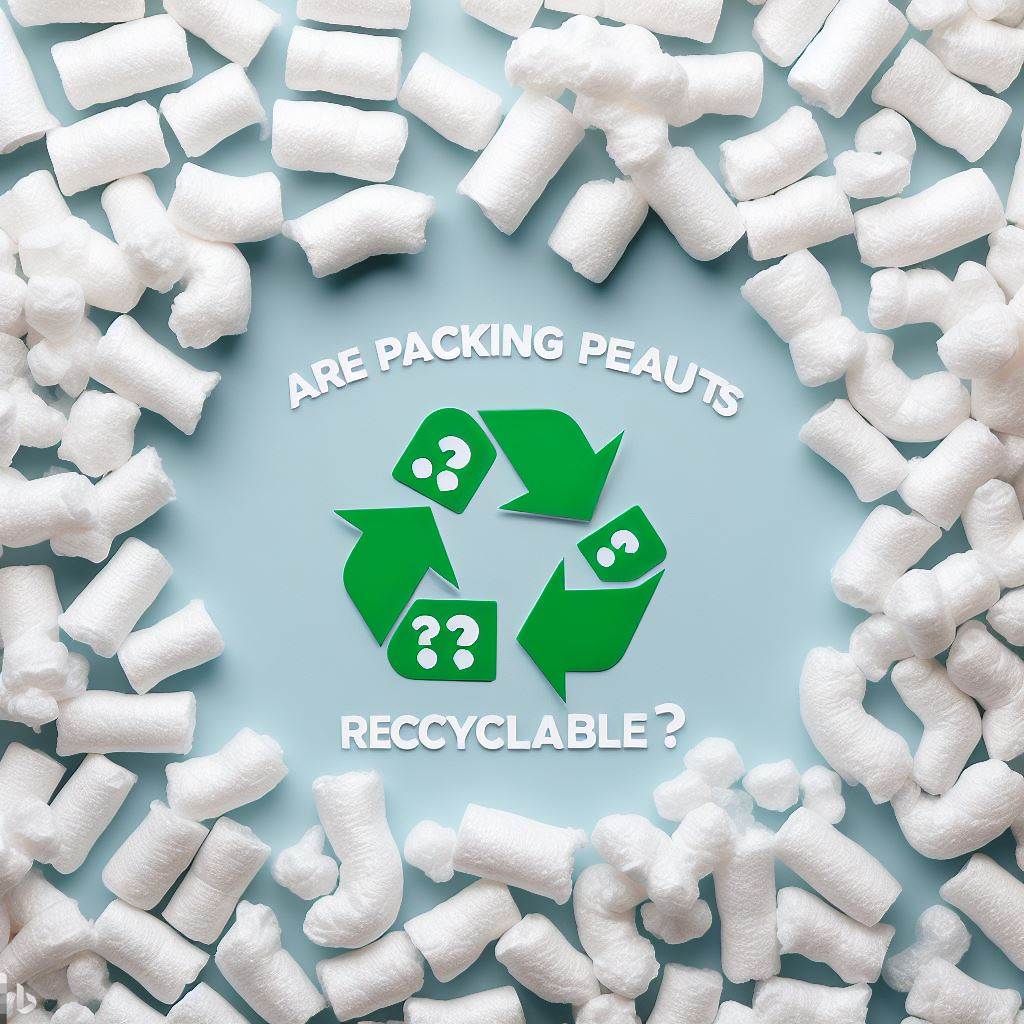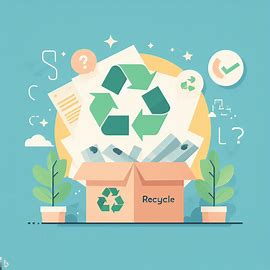Are Packing Peanuts Recyclable? Eco-Friendly Solutions
In today’s fast-paced world, environmental consciousness is crucial. As individuals and businesses strive to reduce their carbon footprint, one common query arises: are packing peanuts recyclable? These tiny foam pieces, widely used in shipping and packaging, play a significant role in safeguarding products during transit. However, their disposal often raises concerns due to their environmental impact.
Understanding Packing Peanuts:
Packing peanuts, also known as foam peanuts or polystyrene loose-fill packaging, come in two primary forms: polystyrene and biodegradable/compostable materials. Traditional packing peanuts are typically made from expanded polystyrene, a non-biodegradable material. While highly effective at cushioning items, their disposal poses environmental challenges as they can take hundreds of years to decompose.
Are Packing Peanuts Recyclable?
The recyclability of packing peanuts largely depends on their material composition. Polystyrene-based packing peanuts are not easily recyclable through regular curbside recycling programs. These lightweight, static-filled foam pieces can clog recycling machinery and are not accepted by most recycling facilities due to their low-density and potential contamination issues.
However, there are alternatives available in the market. Some manufacturers produce biodegradable packing peanuts made from natural materials like cornstarch or other compostable substances. These environmentally friendly alternatives dissolve in water and can be decomposed in backyard compost bins, making them an eco-conscious choice for packaging.
Responsible Disposal Methods:
For non-recyclable polystyrene packing peanuts, consider reusing them whenever possible. Local shipping centers or mailing stores often accept clean, reusable packing materials for other shipments. Additionally, some online platforms facilitate the exchange of packing materials among individuals and businesses, promoting reusability.
For polystyrene packing peanuts that can’t be reused, check for specialized recycling centers that handle foam-based materials. Some centers have the capability to recycle polystyrene, although this option might not be widely available in all areas.
1. Reuse and Recycle:
-
Reuse:
Consider reusing packing peanuts for future shipments. Local shipping stores or packaging centers often accept clean and reusable packing materials. This practice not only extends the life of these materials but also reduces the need for new packaging products.
-
Recycle:
Some facilities or specialized recycling centers accept specific types of packing peanuts for recycling, especially those made of more recyclable materials like Expanded Polystyrene (EPS). These centers might have the necessary equipment to manage and recycle these materials efficiently. Check with your local recycling facilities or specific drop-off points to see if they accept these materials.
2. Donation and Exchange:
- Look for local businesses, community centers, or organizations that might need packaging materials. Donating or exchanging these materials can provide them a second life and reduce the need for new packaging. Several online platforms facilitate the exchange of packing materials among individuals and businesses, promoting reusability.
3. Proper Disposal:
- For non-recyclable or unusable packing peanuts made from traditional polystyrene, consider proper disposal. However, it’s important to note that local regulations and capabilities may vary.
- Contact your local waste management facility to inquire about their policies on packing peanut disposal. They may provide guidance on how to discard these materials in an environmentally responsible manner. Some areas might allow these materials to be included in regular waste pickups, while others might have specific guidelines for disposal.
4. Specialized Recycling Centers:
- Some specialized recycling centers focus on handling foam-based materials, including certain types of packing peanuts. These centers possess the equipment necessary to manage and recycle foam-based packaging materials, preventing them from ending up in landfills. Check for specific drop-off points or centers that specialize in recycling foam-based materials.
5. Environmental Impact Consideration:
- Recognize the environmental impact of your disposal method. When traditional polystyrene packing peanuts are disposed of in landfills, they contribute to long-term environmental issues. Opting for eco-friendly and biodegradable alternatives helps reduce this impact significantly. Choose materials that align with responsible disposal practices and have a lower environmental footprint.
By practicing responsible disposal methods, including reusing, recycling, and donating where possible, individuals and businesses can significantly reduce the environmental impact of packing peanuts. Selecting packaging materials with recyclable or biodegradable properties and exploring local recycling options not only minimizes waste but also contributes to a more sustainable approach to packaging and shipping. Ultimately, the goal is to adopt practices that minimize waste and support a circular economy while preserving the environment for future generations.
Eco-Friendly Alternatives:
Opting for biodegradable or compostable packing peanuts is a sustainable choice. These materials break down naturally, reducing environmental impact. Switching to these eco-friendly alternatives not only aids in reducing waste but also supports the circular economy, promoting a more sustainable way of packaging and shipping goods.
1. Biodegradable Packing Peanuts:
Biodegradable packing peanuts are made from natural materials like cornstarch or other compostable substances. These peanuts are designed to break down quickly and safely, either in water or in a composting environment. As a sustainable alternative to traditional polystyrene peanuts, they offer excellent cushioning and protection for shipped items without leaving a lasting environmental footprint.
2. Shredded Paper:
Using shredded paper as a packaging material is another eco-conscious alternative to packing peanuts. It’s an easily accessible and cost-effective option. Recycled paper or newspaper shredded into strips can provide sufficient cushioning while being biodegradable and easily recyclable. This not only repurposes waste paper but also minimizes the environmental impact of packaging materials.
3. Air Pillows or Inflatable Packaging:
Air pillows or inflatable packaging made from recyclable plastic materials offer a lightweight and protective solution. These air-filled cushions are reusable and can be deflated for easy storage, reducing their environmental impact. Many air pillows are made from recyclable plastics and can be recycled through some specific drop-off locations.
4. Mushroom Packaging:
Mushroom packaging, also known as mycelium packaging, is an innovative eco-friendly alternative. It’s created by growing mycelium, the root structure of mushrooms, into a desired shape. This biodegradable material offers excellent shock absorption and can be composted at home, providing a sustainable solution for packaging.
5. Biodegradable Foam:
There are emerging alternatives in the form of biodegradable foams, made from plant-based materials like sugarcane or bamboo. These foams are designed to break down naturally without leaving harmful residues in the environment.
6. Dissolvable Packing Peanuts:
Some companies produce dissolvable packing peanuts that can be easily dissolved in water. Made from biodegradable materials, these dissolve rapidly and can be disposed of safely down the drain without causing harm to the environment.
Choosing these eco-friendly alternatives not only ensures the safe delivery of your packages but also aligns with sustainable practices. It’s important to consider the specific needs of your shipments and select the most suitable eco-friendly option, contributing to a reduction in waste and environmental impact.
As the demand for sustainable packaging grows, the market continues to innovate, offering more environmentally friendly choices for businesses and individuals seeking to minimize their ecological footprint. The shift towards these alternatives not only aids in waste reduction but also encourages the development of a circular economy that prioritizes environmental stewardship and responsible packaging practices.
Frequently Asked Questions (FAQs)
Certainly! Here are five frequently asked questions (FAQs) regarding the topic of packing peanuts and their disposal:
1. Are traditional packing peanuts recyclable?
Answer: Traditional packing peanuts, typically made of expanded polystyrene, are not easily recyclable through standard curbside recycling programs. Their low density and potential to contaminate other recyclables make them challenging for most recycling facilities to process.
2. What are the eco-friendly alternatives to traditional packing peanuts?
Answer: Several eco-friendly alternatives exist, including biodegradable packing peanuts made from natural materials like cornstarch, shredded paper, air pillows or inflatable packaging, mushroom packaging, biodegradable foam, and dissolvable packing peanuts made from biodegradable materials.
3. How can I responsibly dispose of packing peanuts?
Answer: Responsible disposal methods include reusing packing peanuts for future shipments, donating them to local shipping stores or community centers, checking with specialized recycling centers that handle foam-based materials, and contacting local waste management facilities to inquire about specific disposal guidelines.
4. Can I recycle packing peanuts made from biodegradable materials?
Answer: Packing peanuts made from biodegradable materials, such as cornstarch or compostable substances, can often be dissolved in water or composted in home compost bins. However, always check with local recycling facilities or composting guidelines to ensure proper disposal.
5. Where can I find specialized recycling centers for packing peanuts?
Answer: Some specialized recycling centers or drop-off points accept foam-based materials, including certain types of packing peanuts. Check with local waste management or recycling facilities to locate specific drop-off points that handle foam-based packaging materials. Additionally, certain shipping stores or online platforms facilitate the exchange or donation of packing materials.
Conclusion:
The quest for sustainable packaging solutions remains vital in the fight against environmental degradation. When it comes to packing peanuts, the recyclability and responsible disposal methods differ based on the material used. While traditional polystyrene-based packing peanuts pose challenges in recycling, embracing biodegradable options and reusability practices significantly contributes to environmental conservation.
By understanding the various disposal methods and opting for eco-friendly alternatives, individuals and businesses can play a pivotal role in reducing waste and safeguarding the planet.
Remember, every small action towards sustainability counts, and making informed choices about packing peanuts contributes to a greener future for all.







